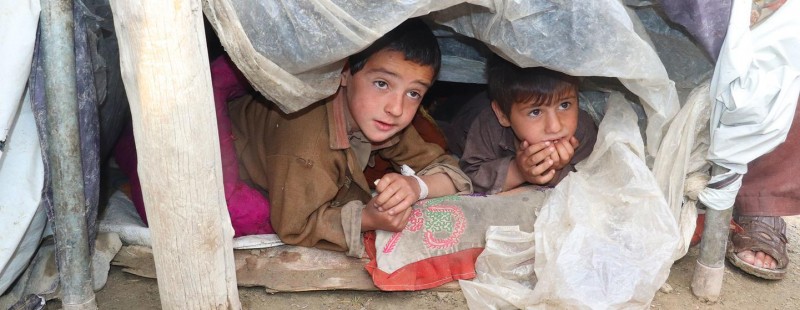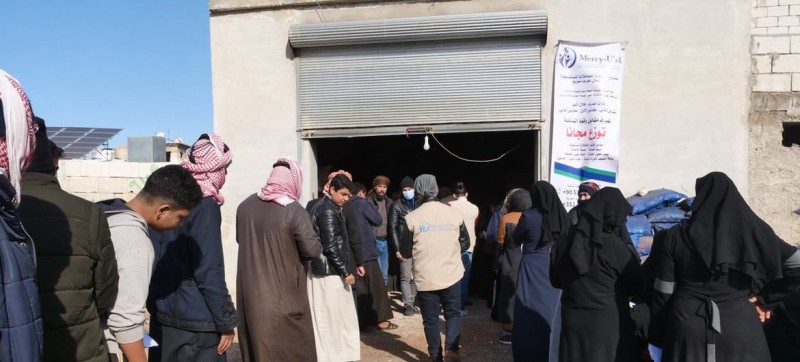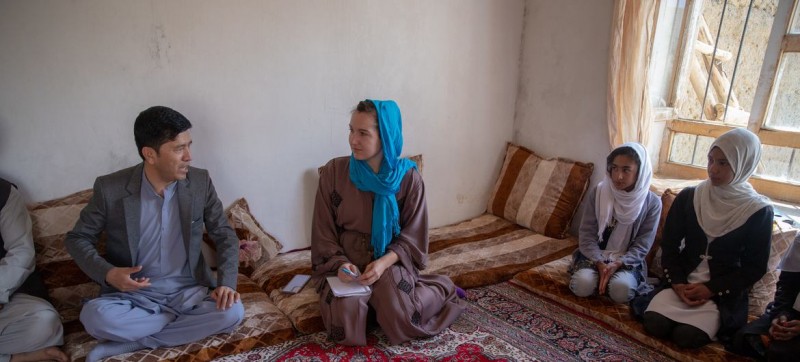Children shelter and sleep under plastic sheets after a 5.9 magnitude earthquake struck Paktika Province in Afghanistan. On World Humanitarian Day, marked annually on 19 August, aid workers Ahmad Alragheb, based in Syria, and Veronica Houser, stationed in Afghanistan, talk about the crucial humanitarian effort in these countries, and the challenges they and their colleagues face. “Humanitarians put themselves in very unsafe situations to save people, but there’s no other choice”, explains Ahmad Alragheb, program manager for food security of Mercy-USA NGO in Syria, one of the countries with the most perilous circumstances. “Humanitarian aid is a target for the state regime because it supports people who try to stay resilient”, says Mr. Alragheb, who in 2019 was displaced from his hometown in Idlib, Syria, after the government occupied the region. Many humanitarian workers have been killed in the Middle Eastern nation, yet they continue to provide help to people, preventing many from dying of starvation. Volatile Syria, which has been troubled by a decade-long ongoing civil war, has seen almost two million people leave their homes to seek shelter in other regions. Mercy-USA’s mission, in partnership with the UN Office for the Coordination of Humanitarian Affairs (OCHA), regularly crosses the Syrian border from their offices in Türkiye to provide food assistance to 200,000 Internally Displaced People (IDPs) and shelter to 1,396 civilians in 15 camps in the country. This is possible thanks to a UN Security Council resolution that allows humanitarians to safely cross the Syrian border from different points. Internally displaced persons in Syria queue for aid. One of the key issues faced by IDPs is that the tents in which they live are only designed to last for one year. However, it’s economically difficult to replace them, and some IDPs have been living in the same tent for five years. Around 80 per cent of the displaced people are children and women, an especially vulnerable group; Women’s privacy is an important matter and most of the tents, and the tight cohabitation with their children, don’t provide them a safe space to express their concerns, or get protection from aggression, and they are not healthy places to live: some women can’t even take off their hijab for months as they are constantly exposed. Mr. Alragheb explains that people have lost all their belongings, they don’t have a place to recover their normal life, and it’s almost impossible for them to find a job in Syria, which is facing, he says, “a never-ending cycle of problems”. UNICEF worker Veronica Houser meets with Afghanis. The drive to help others can be strong enough to make people leave the comfort and safety of their homes, and head to a place in severe crisis to fight for the human rights of the people living there.
Syria, where the displaced are helping the displaced


The struggle for women’s education in Afghanistan
This was the case of Veronica Houser, who moved from the United States to the UN Children’s Agency (UNICEF) mission in Afghanistan, two months after the Taliban takeover in Kabul last August. “I felt the contrast between the privilege that I had where I was born, compared to the violation of the rights of other women”, she says.
Having previously worked in Rwanda and South Sudan, she hoped to make a difference in Afghanistan by publishing stories and raising the voices of those who are not often heard.
One of the main concerns of the UNICEF mission is the ban on girls attending high school, the only country in the world where this happens. Most of the girls refuse to give up, and maintain hope that the schools will reopen soon.
Meanwhile, UNICEF is distributing millions of textbooks and school supplies around the state, and is building new educational spaces where permitted. The UN agency has established women and girl-friendly spaces where children can play, women can express themselves, and have access to psychosocial support.
“The educational crisis is also a protection and a mental health crisis”, says Houser. “These girls are not able to see their friends, they don’t know what their future is going to look like, they feel anxious, and some even enter early marriages”.
It Takes a Village
Related Posts
WEJ PROJECTS
© 2009-2025, World Economic Journal. All Rights Reserved. Republishing permitted with attribution and active hyperlink to the original source.

